Heading into their 2022-23 campaign, the Toronto Maple Leafs will have a drastically different setup in net than the one they had hoped would bring them more collective success in 2021-22. Gone are Jack Campbell and Petr Mrázek; in are Matt Murray and Ilya Samsonov.
Having two starter-quality goaltenders to share playing time may sound like it mirrors last year’s scenario, but this season’s strategy will be approached in an alternate manner. Rather than opportunities being handed out between them, the role will be reserved for the goalie performing best.
RELATED: Marc-Andre Fleury’s Case as a Hall of Famer
That said, the name of Toronto’s No. 1 on any given night won’t matter as much as what this approach should elicit when it comes to the team’s overall success. As the battle between Murray and Samsonov intensifies, the Maple Leafs will be the ultimate beneficiary.
Toronto’s Failed Tandem Approach in 2021-22
Before being able to dissect why this year’s game plan will work, it’s relevant to dig into how the one Kyle Dubas deployed last season didn’t.
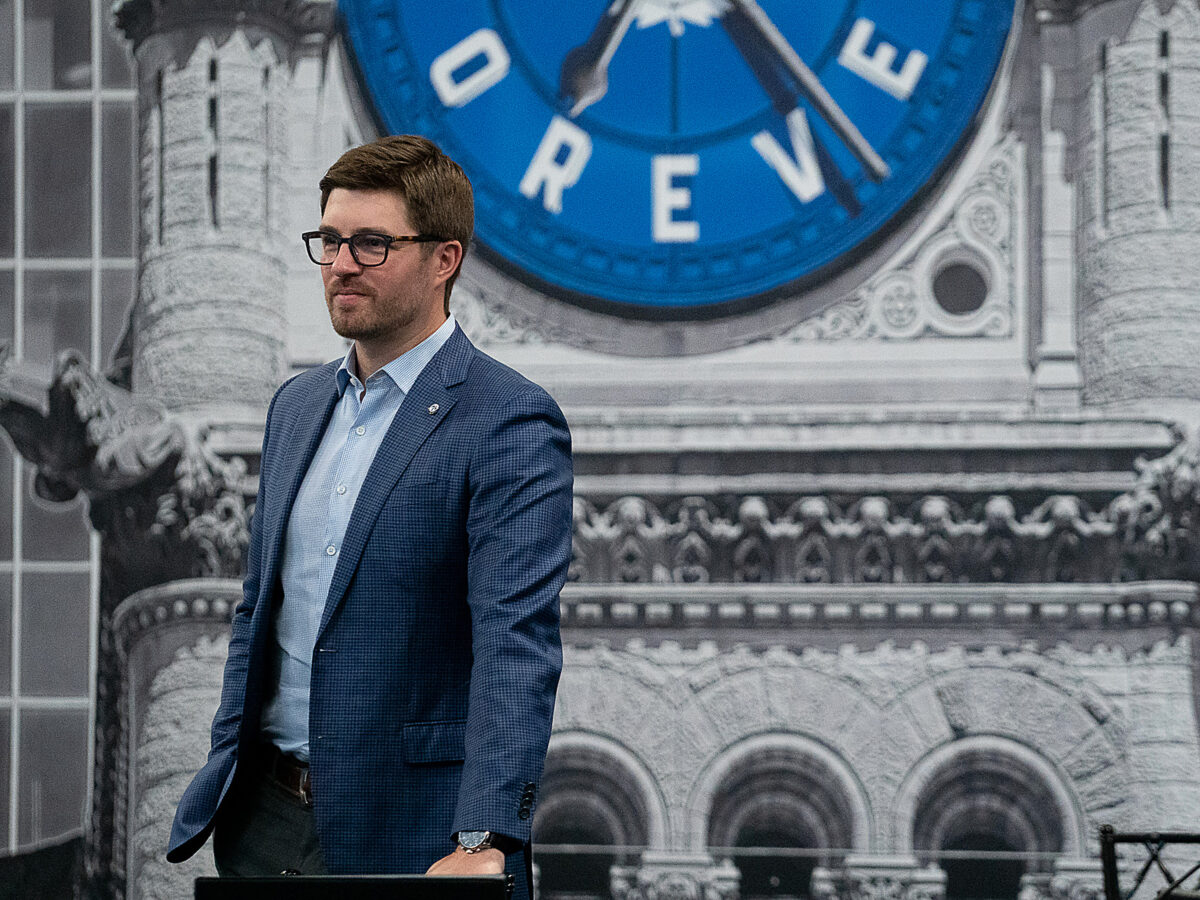
Toronto began 2021-22 with the anticipation that Campbell and Mrázek would be a solid 1A/1B tandem. Campbell had come off a successful initial stint with the Maple Leafs, to the degree that it made it easier for them to watch Frederik Andersen walk in free agency, and Mrázek was looking to rebound back to form from an injury-ridden 2020-21.
The latter had proven his capabilities throughout the past decade, while the former was poised to do the same with added playing time. On paper, it appeared to be an equation that could compute.
Unfortunately, that blueprint was re-written quickly into the season when Mrázek’s injury troubles crept into Toronto’s locker room. Not all seemed lost, though, as Campbell was able to pick up the pieces and run with the opportunity. One he likely felt was due from the get-go anyway, given his record-breaking stat line through 2020-21.
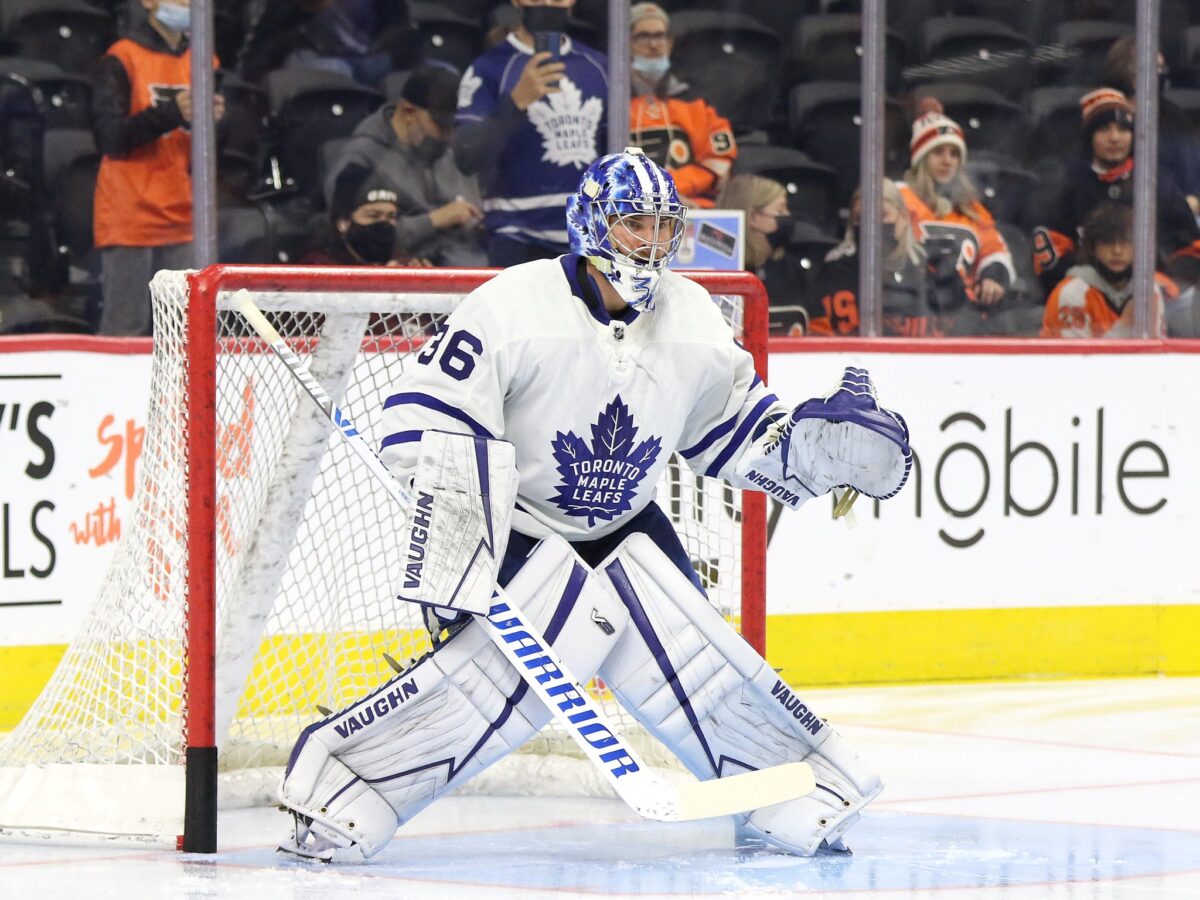
After maintaining all-star-worthy numbers throughout the initial half of the 2021-22 campaign, during which Campbell went 15-5-2 with a 1.87 goals-against average (GAA), .937 save percentage (SV%), and three shutouts, his play came back down to earth as the season progressed.
Despite earning a record of 16-4-4 the rest of the way, Campbell achieved a meagre .893 SV% and 3.08 GAA within that sample size, impacting his year-end numbers in the wrong manner. What made things worse, was that he and Mrázek also appeared to be taking turns leaving the lineup with additional ailments.
Mrázek only ended up getting into 20 games last season, during which he accumulated career-worsts with a 3.34 GAA and .888 SV%.
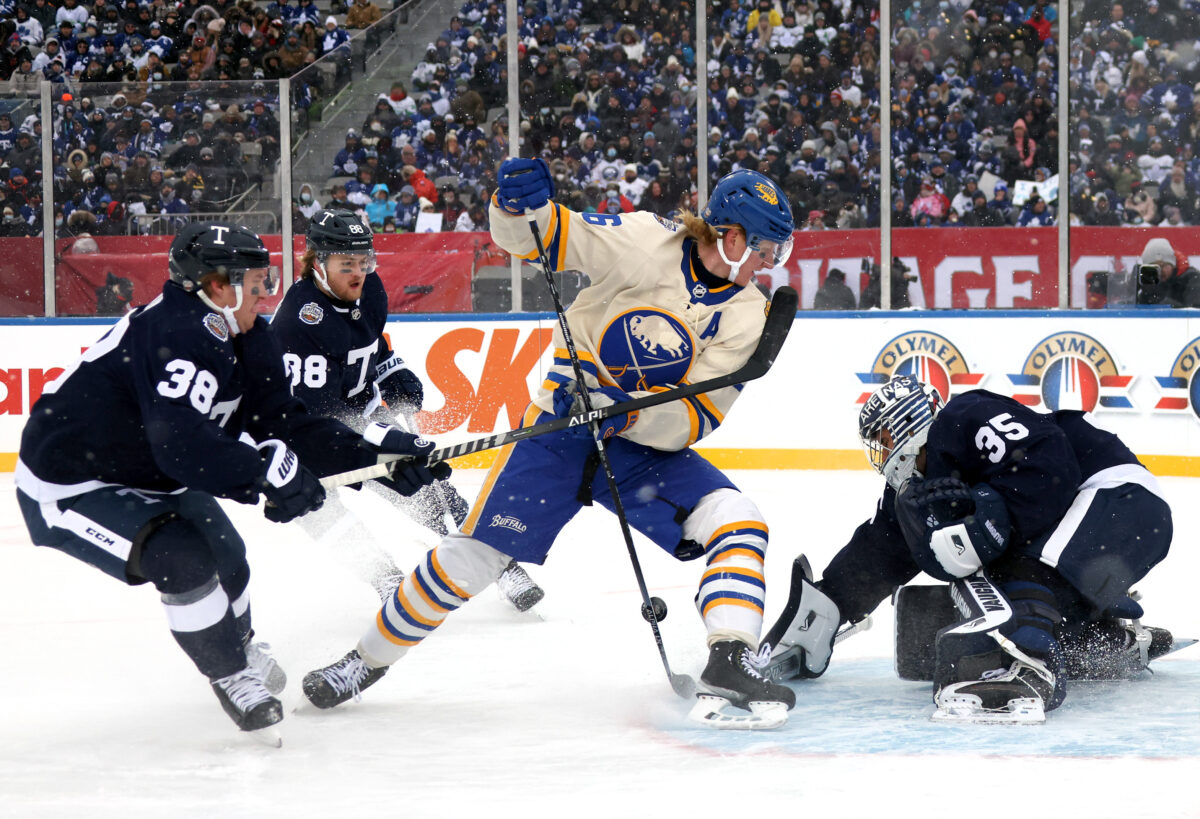
When it comes to the most telling goalie-specific stat, as far as one’s ability to be relied upon for their individual contribution, neither performed well enough to end the regular season with a positive goals saved above expected (GSAx). Campbell’s GSAx wasn’t as bad at -2.3, while Mrázek’s -11.6 only furthered the failure he experienced.
As the postseason approached, it was clearly Campbell’s net. Not only had he outperformed his fellow netminder all season long, but Mrázek being sidelined with yet another injury made Toronto’s decision that much more obvious.
What proceeded was a back-and-forth series against the reigning Stanley Cup champion Tampa Bay Lightning, that resulted in another First Round exit for the franchise. Campbell went 3-4-0, compiling a 3.15 GAA, .897 SV%, and -1.1 GSAx. Stats that did little to help his team’s efforts.
Ultimately, despite Toronto’s regular season success through 2021-22, the tandem of Campbell of Mrázek just wasn’t up to the task of winning when it mattered most — the playoffs.
While a variety of factors can be pointed to as the cause, perhaps the Maple Leafs’ failure to encourage an internal battle between the two played a part. A reality that the organization hopes to avoid repeating in 2022-23, by pinning Murray and Samsonov against each other in a much more explicit manner.
Samsonov & Murray Have Seen This Starter Strategy
This coaching strategy isn’t a new one. In fact, both Samsonov and Murray have already faced it on former teams. Samsonov and Vitek Vaněček split starts with the Washington Capitals throughout much of 2020-21 and 2021-22, while Murray last played through this type of internal competition when he was paired with Marc-André Fleury on the Pittsburgh Penguins in 2015-16 and 2016-17.

While this tactic worked well for Murray, it wasn’t as successful for Samsonov. Pittsburgh won back-to-back Stanley Cups in 2016 and 2017. Washington, on the other hand, was so unsatisfied with Samsonov that they didn’t issue him a qualifying offer this offseason.
That all said, just because Murray became a champion with the Penguins and Samsonov seemingly struggled with the Capitals doesn’t mean either respective result will repeat with the Maple Leafs.
However, that both are familiar with having to battle for ice time means they are ahead of the game in that regard. At the very least, the playing field is level among them in this respect and neither should feel blindsided by a lack of loyalty on Toronto’s part.
Simply stated, knowing the stakes involved will help ensure the netminders prepare accordingly. As Murray looks to find his way back to the league’s peak, Samsonov will be working to establish a more dominant presence than he’s been able to thus far.
It’s that expected increase in effort out of both that the Maple Leafs are banking on.
Murray Hopes to Rebound Back to Peak
Through his first five years in the NHL, Murray achieved a record of 117-53-19 with the Penguins. He added a 2.67 GAA, .914 SV%, and 11 shutouts to that already impressive stat line. Then, following as successful of a start as one can hope for in their professional career, Murray was shipped off to the Ottawa Senators.
Obviously, the Senators were hoping that Murray’s ability to accomplish would transfer regardless of the city he was playing in. What they didn’t take into account, though, was that their roster wasn’t in a position to succeed in the same manner that the Penguins were while Murray was in Pittsburgh.
Add in a plethora of additional ailments that kept Murray sidelined for extended periods while in Ottawa and it became clear that mirroring his peak performances just wasn’t in the cards. Murray concluded his two seasons as a Senator with an abysmal record of 15-25-3, worsened only by his 3.23 GAA, .899 SV%, and -12.7 GSAx.
However, let’s shift the spotlight to Ottawa’s collective failures throughout Murray’s tenure in Canada’s capital, as it aligns with the former third-round pick’s lack of success while there.
In 2020-21, the Senators finished 23rd overall after allowing the fifth most shots against in the entire league. 2021-22 was no better, as the organization concluded the campaign in 26th place and was sixth-worst for shots allowed.
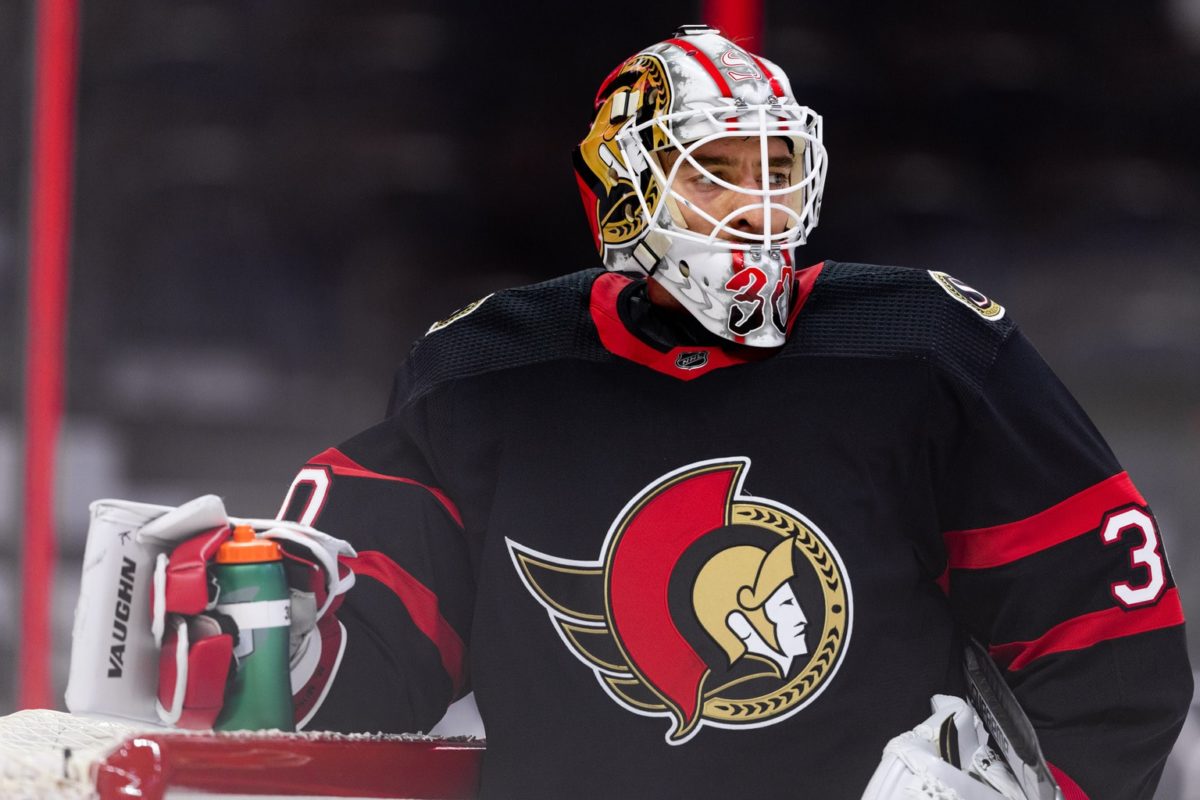
All of which makes it even more relevant to point to Murray’s ability to string together the streak of success he was able to between Jan. 13 and Feb. 7 of last season. He went 5-0-2 in that span, stopping 218 of 231 attempts, and earning a shutout along the way. Too bad for Murray, his team wasn’t able to step up in the same regard the rest of the year.
Murray still appears more than comfortable among the game’s best when he’s healthy, so one can only imagine how returning to a contender will enhance his output. At only 28 years old, he also owns an age advantage over both Campbell (30) and Mrázek (29), suggesting that he has more peak playing time ahead of him than either of Toronto’s former netminders.
What’s more, that he’s motivated to be a Maple Leaf could be the secret ingredient necessary to help guide Murray back to his winning ways.
“I’m extremely motivated. I think I have a lot to prove. And I think coming here, this is a place where I wanted to be,” said Murray, stressing his excitement. “It’s all about pushing myself to try to be the absolute best that I can be. I think Toronto is a great place to do it.”
Surely, what was most important of all for the Maple Leafs was Murray’s record of success in the postseason. An area of their game that they just haven’t been able to progress in recent years, despite their growth and dominance in every other regard.
Through his five seasons with the Penguins, Murray went 29-21-0 in the playoffs and achieved an impressive 2.18 GAA, .921 SV%, and 7.3 GSAx collectively — alongside his two Stanley Cups. He accumulated six shutouts, as well.
Having failed to reach the playoffs with Ottawa, Toronto is ready to witness all that Murray is capable of when given the chance to participate at the most meaningful time of year.
Samsonov Has Untapped NHL Potential
When it comes to comparing their NHL resumes, Samsonov is at a disadvantage. Having entered the league in 2019-20, he’s yet to hit the 100-game mark. Rather than fixating on his small sample size in North America, though, Samsonov’s international accolades should be enough to excite Toronto fans.
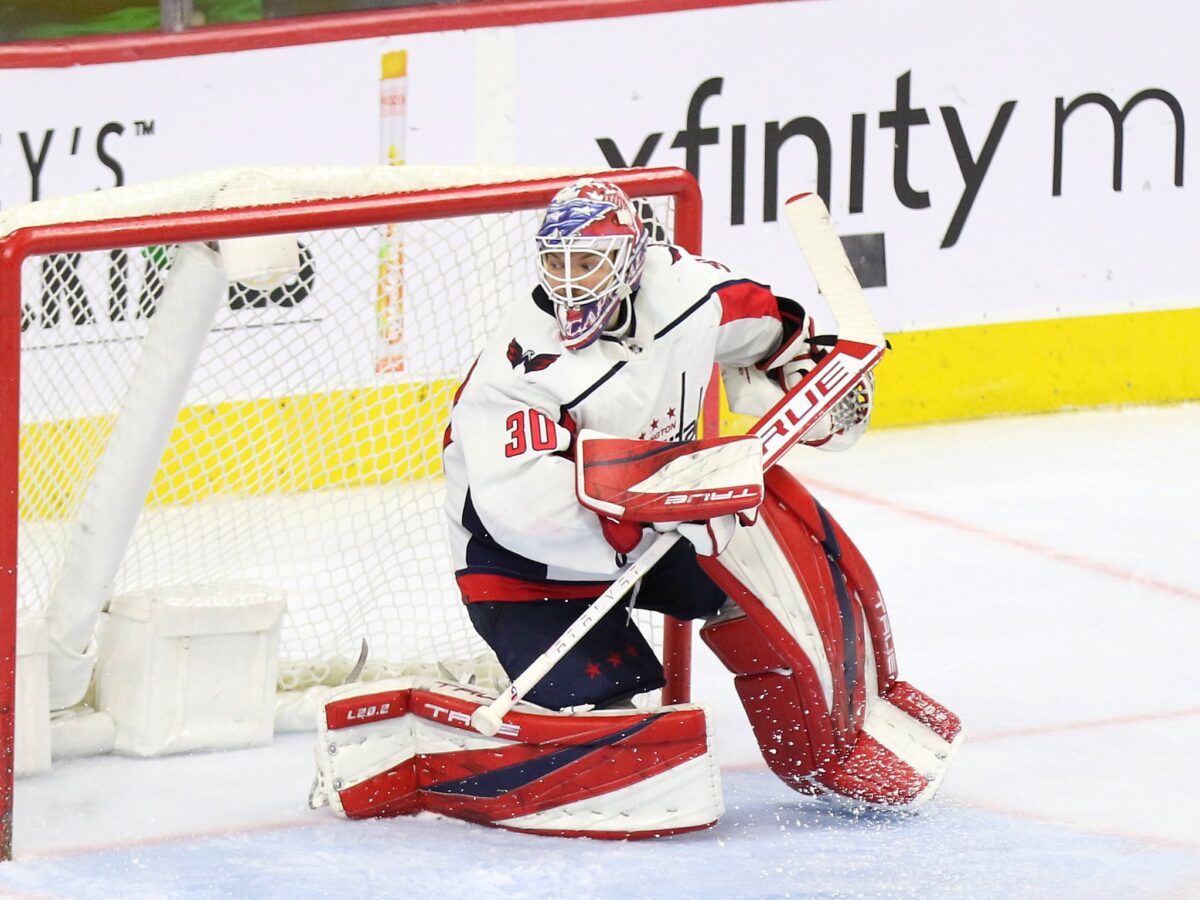
Before finding his way to Washington for the 2019-20 campaign, to join the organization that drafted him 22nd overall in 2015, Samsonov had already compiled quite a list of accomplishments overseas and from international play.
Including, but not limited to, being named the top goaltender at the 2015 U18 World Junior Championship, capturing the 2016 KHL Gagarin Cup, and adding two podium finishes from representing Russia at both the 2016 (silver) and 2017 (bronze) World Juniors.
Fast forward to his tenure in the NHL and there are two different storylines one can choose to follow. On one hand, Samsonov ended his most recent campaign with a 3.02 GAA, .896 SV%, and -12.1 GSAx. Numbers that don’t jump off the page for the right reasons. However, on the other hand, he has a collective stat line that includes a record of 52-22-8, a 2.81 GAA, a .902 SV%, and six shutouts.
Isolating his impressive rookie campaign as the sole reason why Samsonov’s totals are that much better than those achieved last year alone works to support his inherent talent. That he performed in such a manner as a 22-year-old suggests that he can elevate even further, too.
“I think he has surpassed all expectations you think of as a young rookie goaltender, and it’s not easy,” Capitals forward Lars Eller told The Washington Post. “Sometimes you don’t play for two weeks, and he comes in and delivers. I can’t think of a game that he didn’t play well. It’s a luxury to have two goalies like we have.”
It’s also relevant to remind skeptics that Samsonov was playing through only his third NHL season in 2021-22. As he began to rack up his highest game count to date, he strung together a six-game win streak en route to a 13-2-2 record throughout the first half of the campaign. Samsonov stopped 438 of 482 shots faced and earned three shutouts during that stretch.
Clearly, Samsonov is more than capable. Perhaps the increased workload he faced last season took a toll on his ability to maintain any early momentum, but that he was also able to produce such a stunning highlight-reel speaks to why it made sense for Dubas to take a chance on the free agent.
Samsonov signed a one-year deal with Toronto, worth $1.8 million. That the Maple Leafs rounded out their goaltending rotation with a 25-year-old looking to evoke an internal motivation by betting on himself is an indisputable win for their lineup.
Signing this former first-round pick to such a low-risk deal offers tremendous upside for the franchise. There’s no reason to believe Samsonov won’t rebound from an off year and progress in the right direction, given his history of success and proven ability at this level. It’s not far-fetched to anticipate that his best years are ahead.
Confidently anticipating that better performances await, as Samsonov enters yet another contract year, furthers Toronto’s expectation of getting more out of this tandem than they were able to extract from their last.
Keefe Hopes to Automate Toronto’s Goalie Rotation
With the Maple Leafs having proclaimed an open competition for the crease, Sheldon Keef‘s job becomes a little easier than it would have been otherwise. His goalies’ performances will be doing the deciding for him. As such, Keefe can focus on the other areas of Toronto’s lineup that require a little more of his attention.
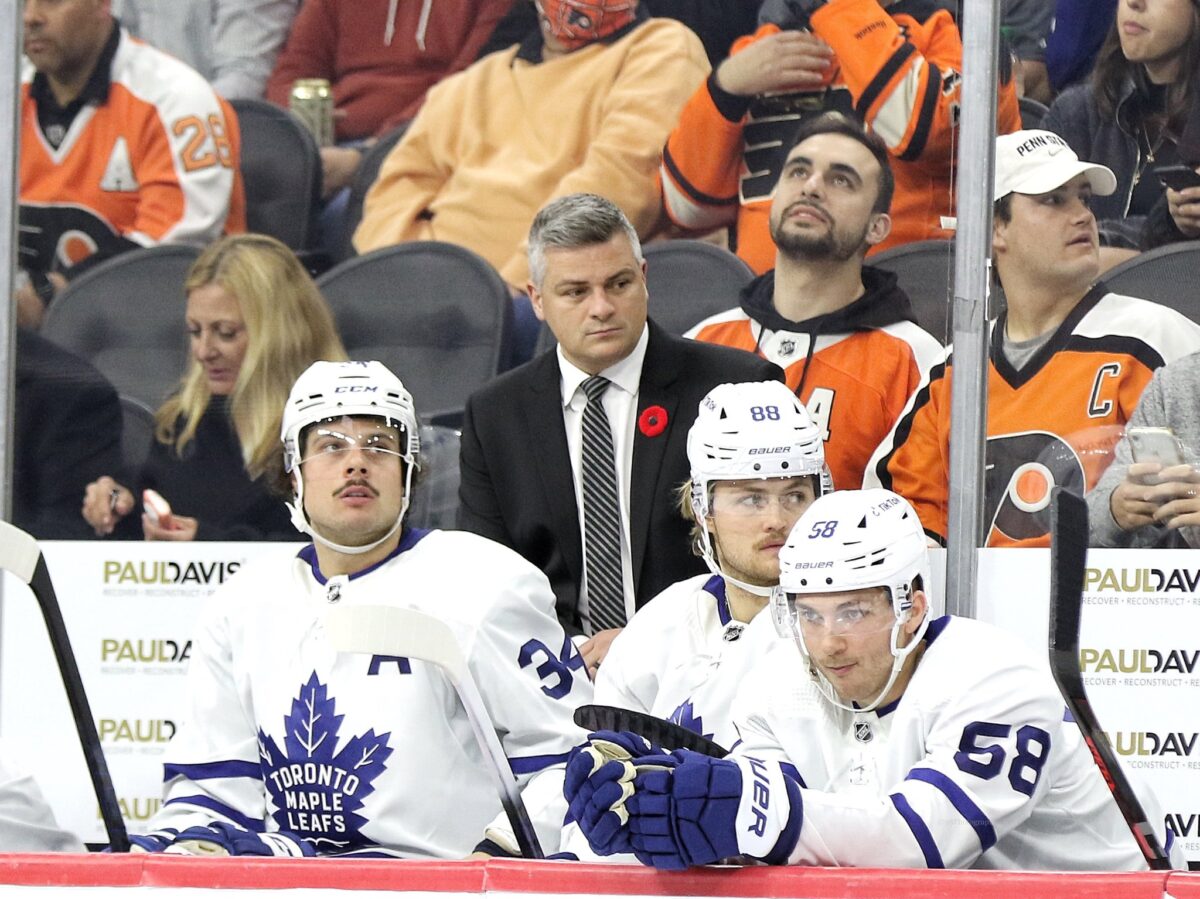
Rather than Murray or Samsonov presuming anything when it comes to their playing time, they have both been put on notice that a battle is about to ensue. It will be their results that dictate who gets the net on any given night, so anticipating their best at all times is justified. Toronto is poised to benefit the whole way through.
“That will be wide open to competition,” Dubas said. “We’ll give them both a good run here and our hope is that both play well, as well as they can, and we will get to work with them mid September and get them rolling. That would be a great thing for us if both of them play the way we think they can.”
As that plan unfolds, the outcome will complement Keef’s overall job function in terms of influencing the highest potential of success possible for his team.
Considering what both have accomplished to date and the desire from each to pave a new path of success within their respective storyline, this healthy competition between Samsonov and Murray will be a necessary differentiator for Toronto throughout 2022-23.
RELATED: Maple Leafs’ 5 Best Canadian-Born Players of All-Time
Expect an end result that benefits everyone involved. Most notably, the franchise itself.
